Figure-Rise Bust: Makina Nakajima by Bandai
Available from HobbyLink Japan
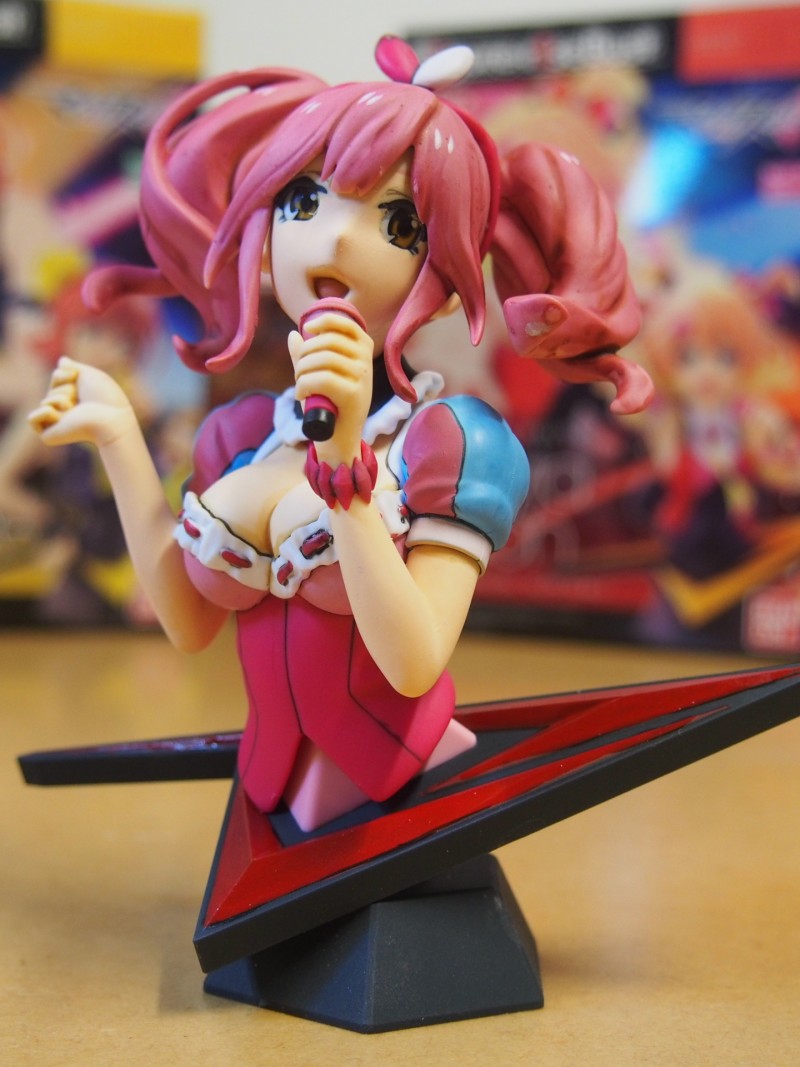
All Rise!
As I suggested in part one, Bandai’s development arm has been working on blending its toy and model lines for some time – over decades, even – slowly trying to find that perfect blend of elements. This is especially important when one remembers that there is no absolute line between toys for kids and models for mature adults.
Indeed, the success of high grade toys like the DX SOC Great Mazinger with adults, despite the 50,000 yen price tag, as well as the popularity of complex models with even young children, seem to have convinced the company that the boundary it once perceived is far more permeable than might be imagined.
This is where series like ‘Figure-Rise‘ come in…
Semi finished figure kits and busts, some of which are as poseable and playable as any figure toy might be, this line is as much an experiment in technology for Bandai as it is a move towards profit.
Using experience gained from making both models and toy figures (of various materials) for the Star Wars franchise, it became apparent that toy collectors would accept, and even laud, models which were well made and would withstand the rigors of repeated posing and ‘playing,’ for want of a better word.
That is why, throughout the increasingly vast Figure-Rise series, we see loads of pre-colored parts and, which is more, a resurgence of the old System Injection process with which Bandai had made something of a name at the beginning of the 1990s.
System Injection
Multi Shot Injection was not developed by Bandai, to be sure.
Indeed, the first developers of the process of ‘overmolding’ were part of the PC industry, who recognized that printed and decaled keys on keyboards would soon be rubbed clean by wear. Hence a two part mold was created in which two colours could be injected with ease. Some of these molds allowed previously finished parts to be reinserted to allow a new plastic layer to form around the first part, whilst others shot plastics into the same mold after the first material had cooled sufficiently to allow for it.
This is often referred to as overmolding rather than multishot molding, though the terms are often interchangeable in some degree.
A mold can produce several copies of the same parts in a single “shot.” The number of “impressions” in the mold of that part is often incorrectly referred to as cavitation. A tool with one impression will often be called a single impression (cavity) mold. A mold with 2 or more cavities of the same parts will likely be referred to as a multiple impression (cavity) mold. Some extremely high-production volume molds (like those for bottle caps) can have over 128 cavities.
In some cases multiple cavity tooling will mold a series of different parts in the same tool. Some toolmakers call these molds “family molds” as all the parts are related. Examples include plastic model kits like the Figure-Rise kits.


To my knowledge (corrections in the comments, please) no kit maker has begun making use of overmolding before Bandai patented their own take on the process, in their ‘system injection’ models in the 1980s.
Bandai initially used this on their high end kits, like the first detailed RX-782, or the toy/kit 1/60 scale F91, which featured not only multi shot parts, but also every element molded in what could be called a ‘finished’ color as well as a metal endoskeleton, which made the finished kit tough enough to be treated as a toy.
This is a thing we are now seeing again with the High Resolution series of kits like the Barbatos.
New Heights
Not as big or impressive to the eye, the current generation of Figure-Rise kits has learned the lessons of the decades, however, and it is clear Bandai has placed great hopes on the success of this technology.
However, how does it actually work?
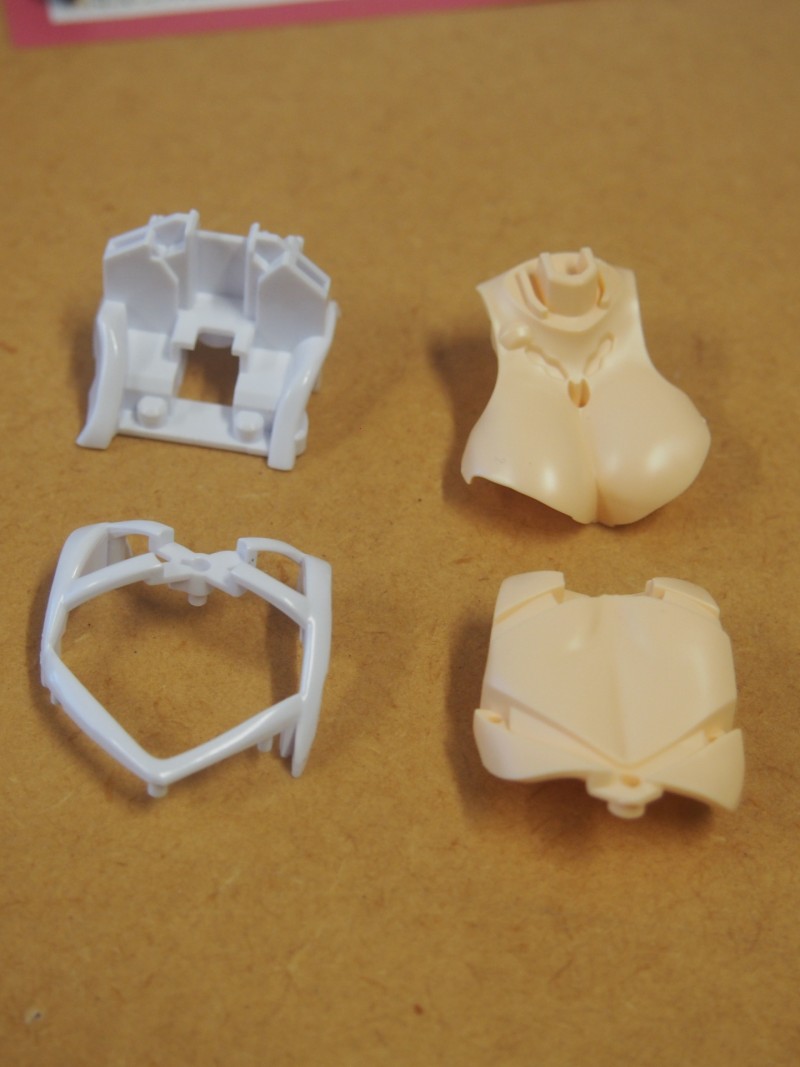

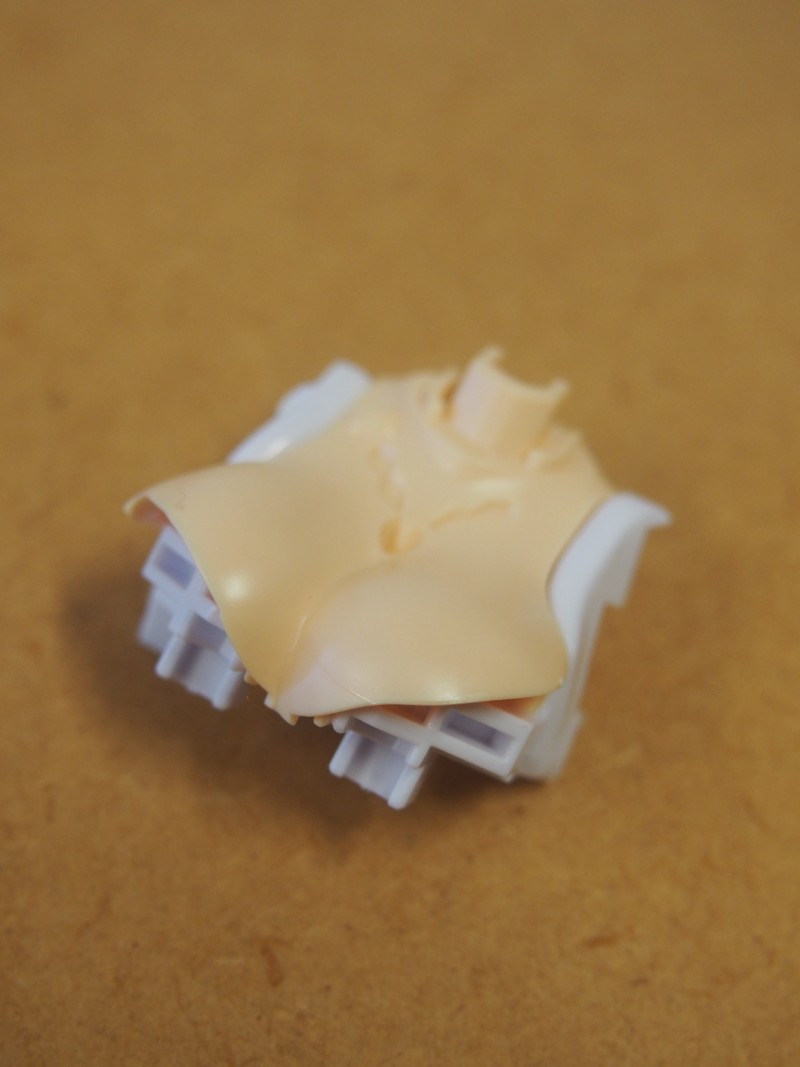

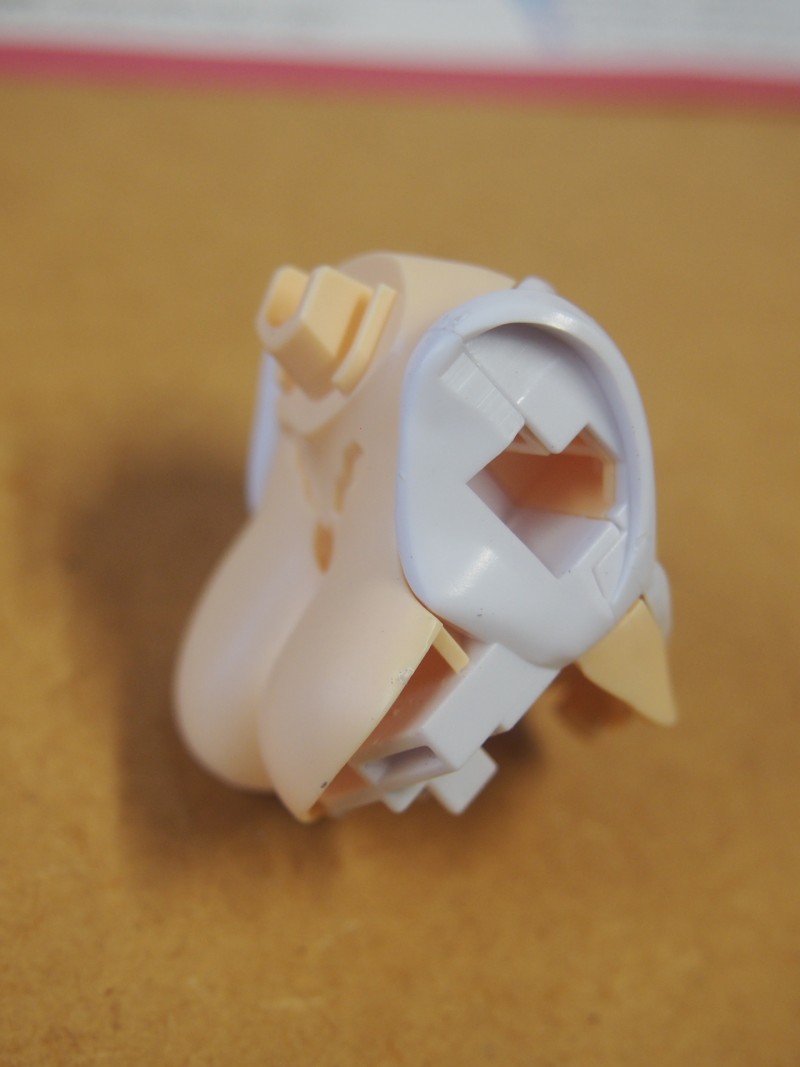

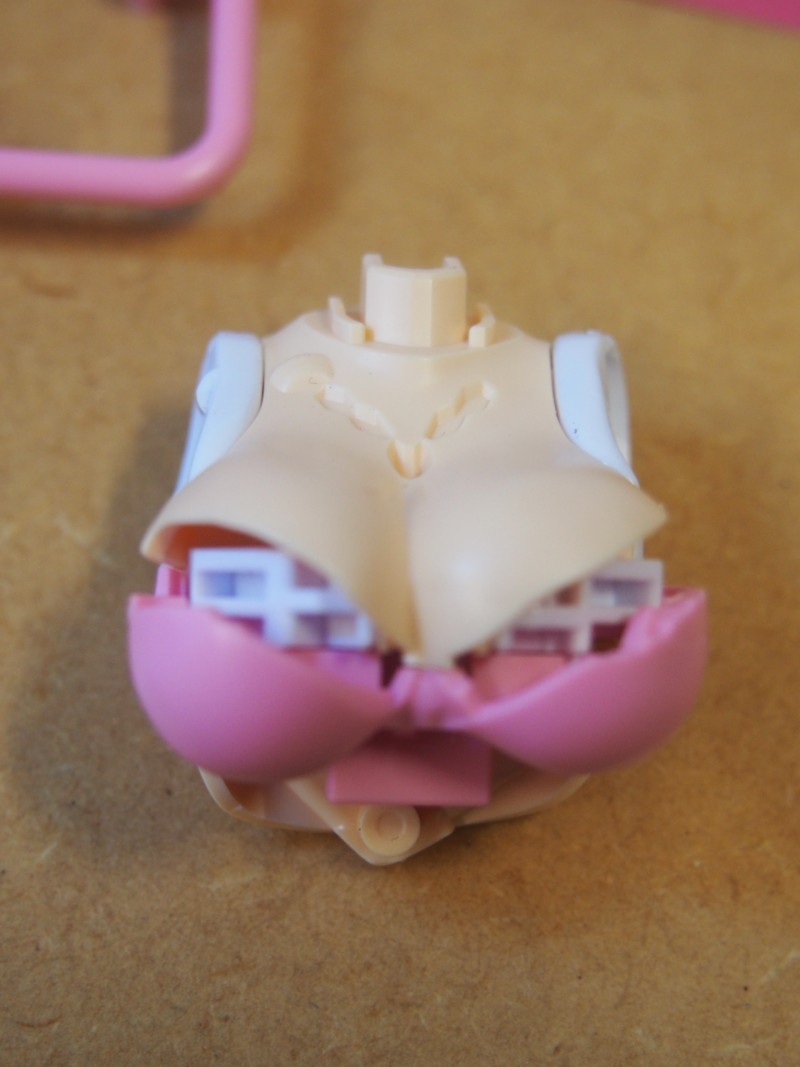

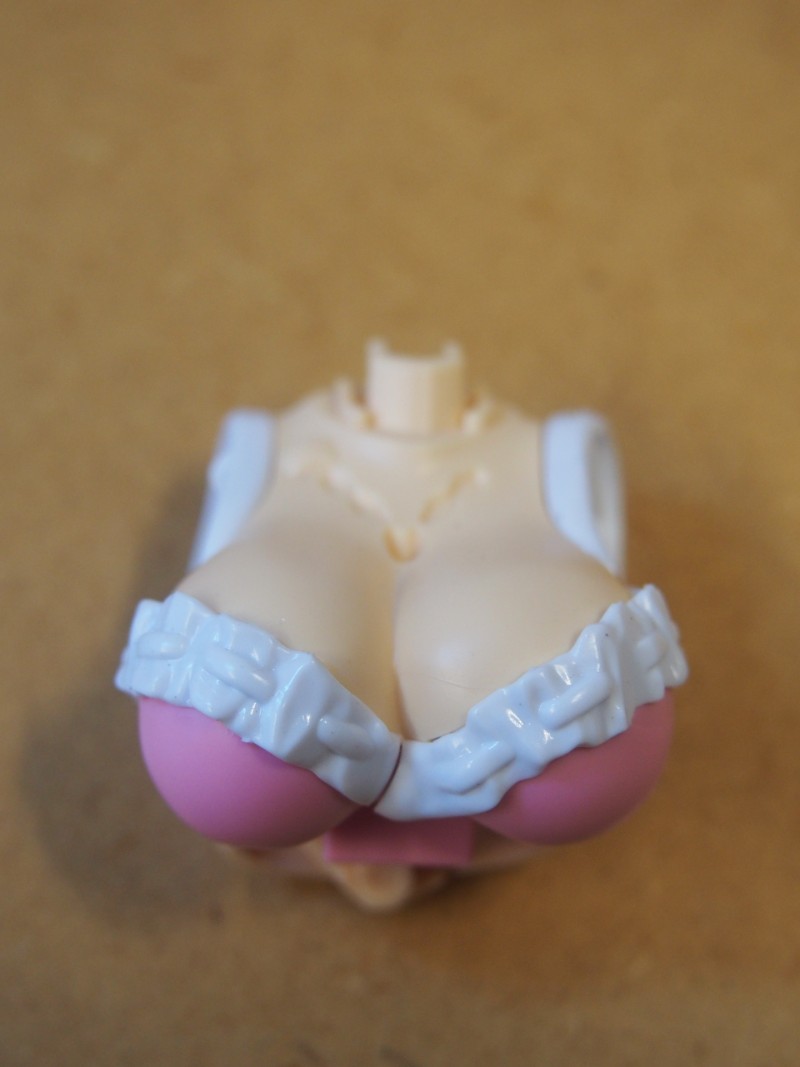

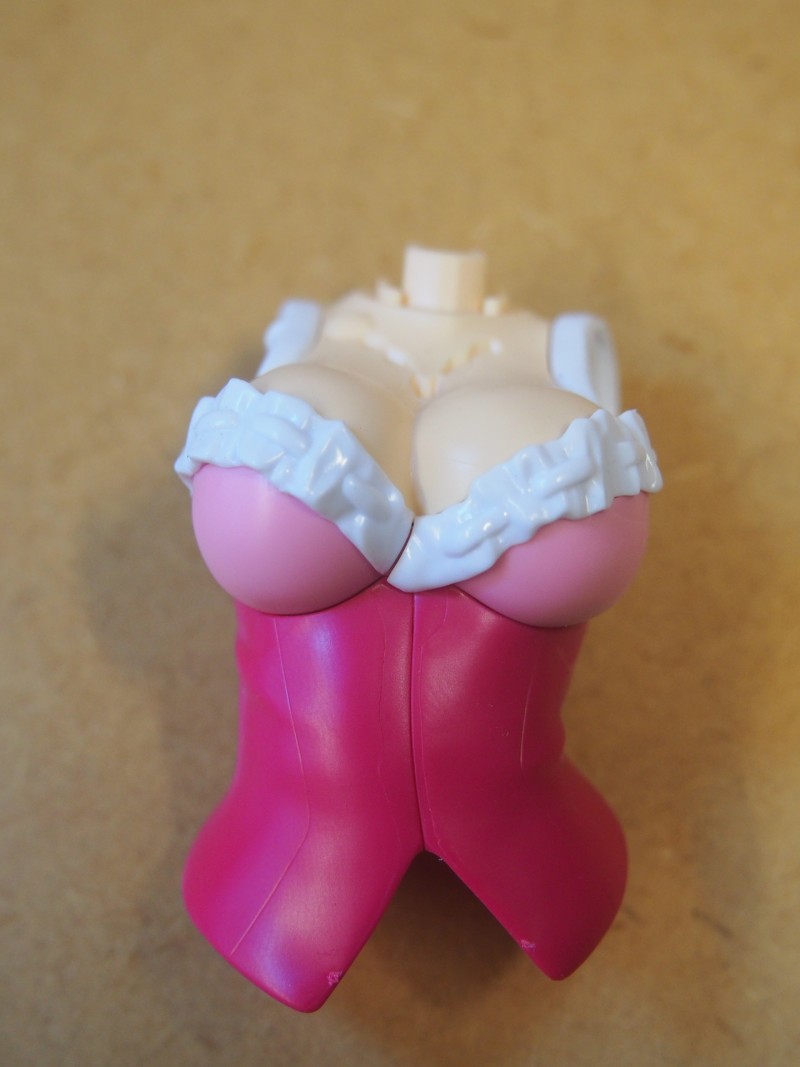

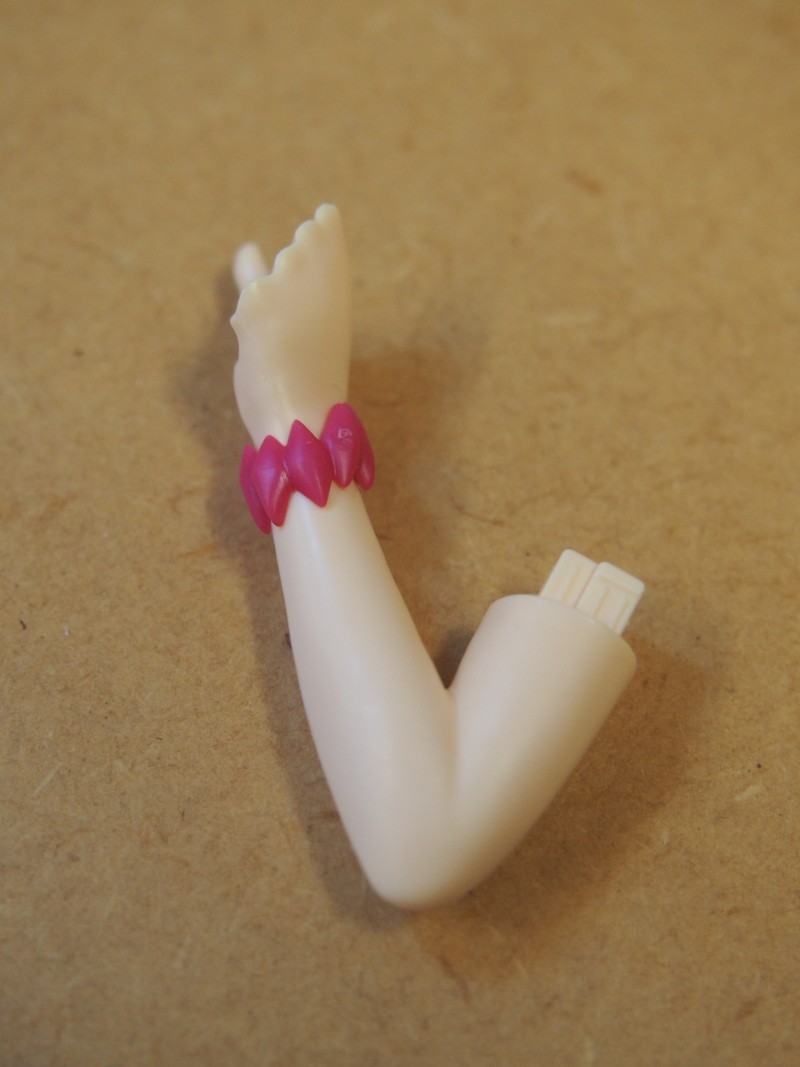

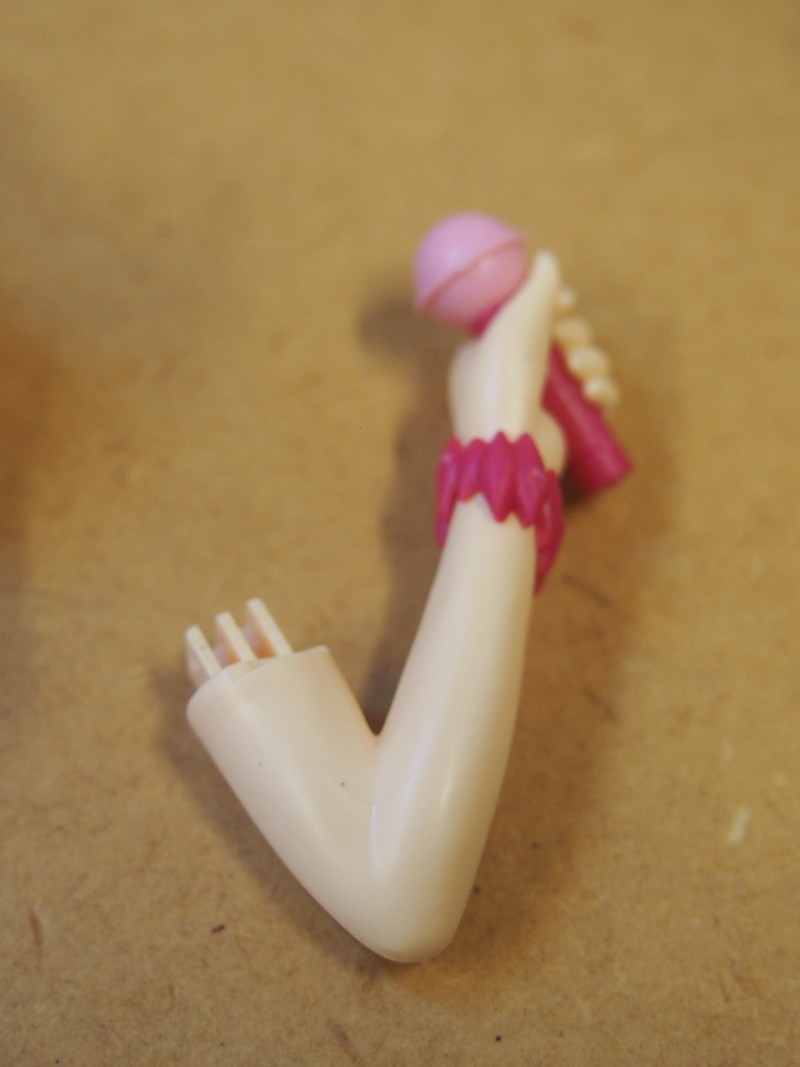

On this figure, tolerances are not unreasonable, though not as tight as I would have liked to see. However, I feel a simple builder would not mind these little gaps, and a more dedicated builder would know all the tricks necessary to close them up without ruining the plastic’s color.
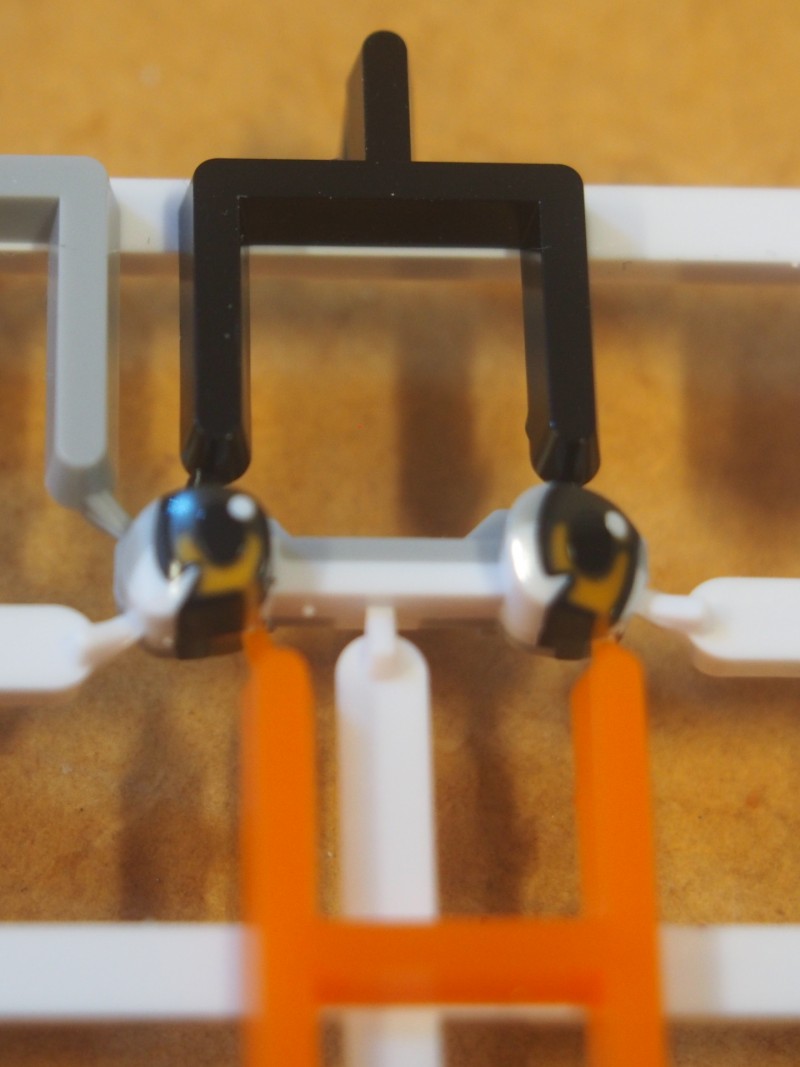

Apologies for the focus issues. Time for a new camera… 🙁
Even so, it is easy to see the complexity of the eye mold shots, with its four individual runs into the one element.
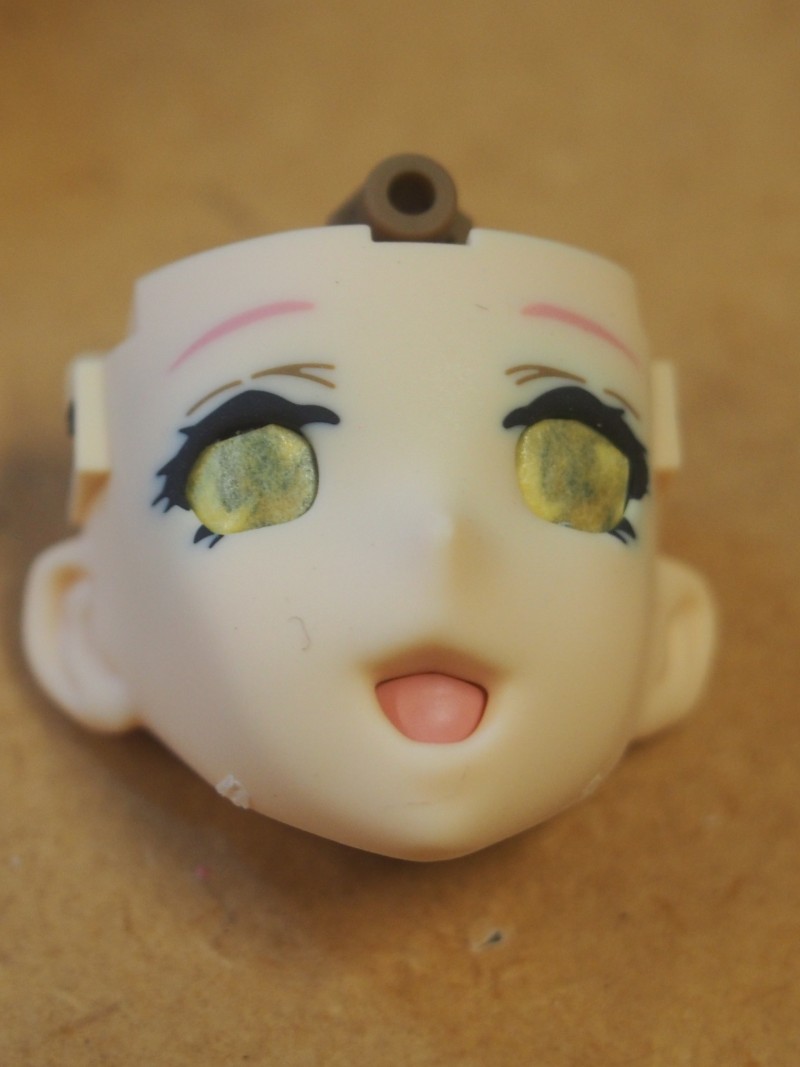

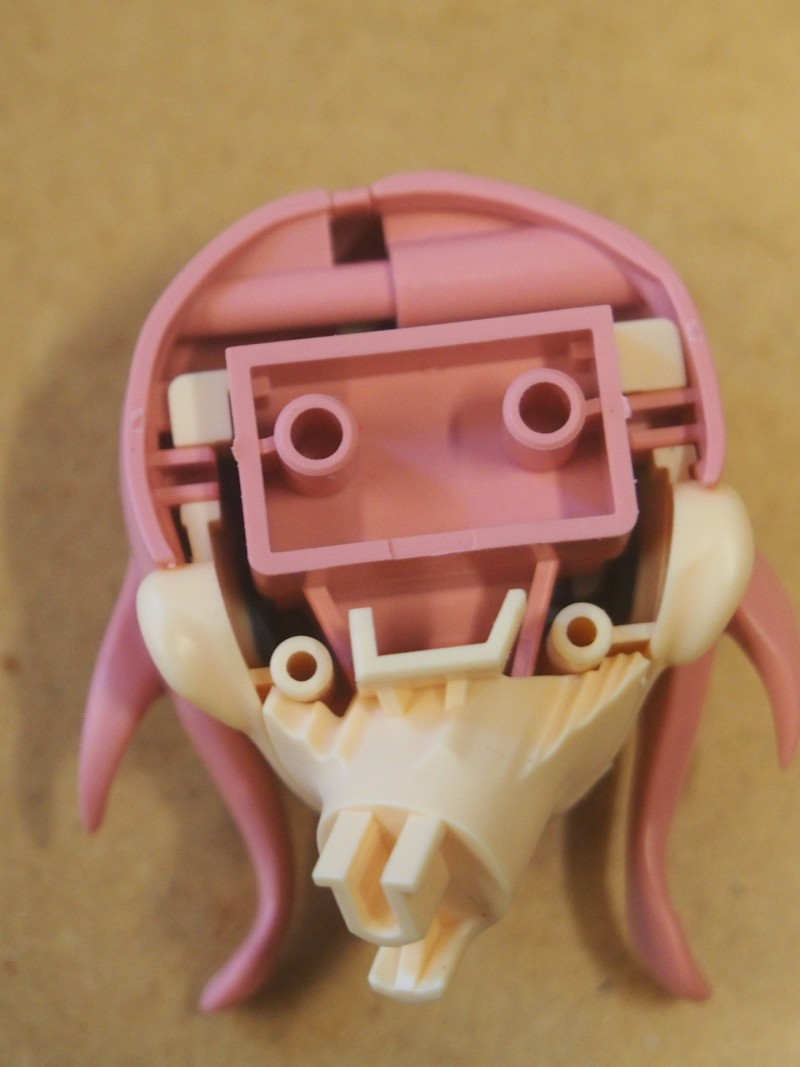

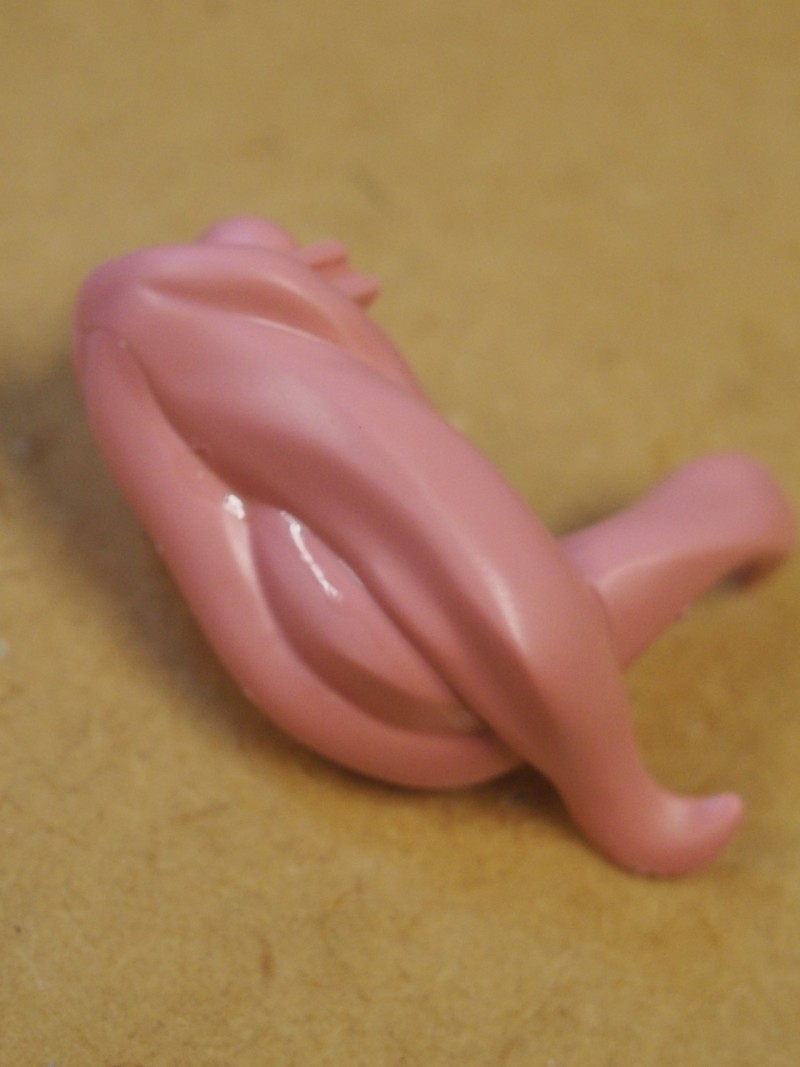

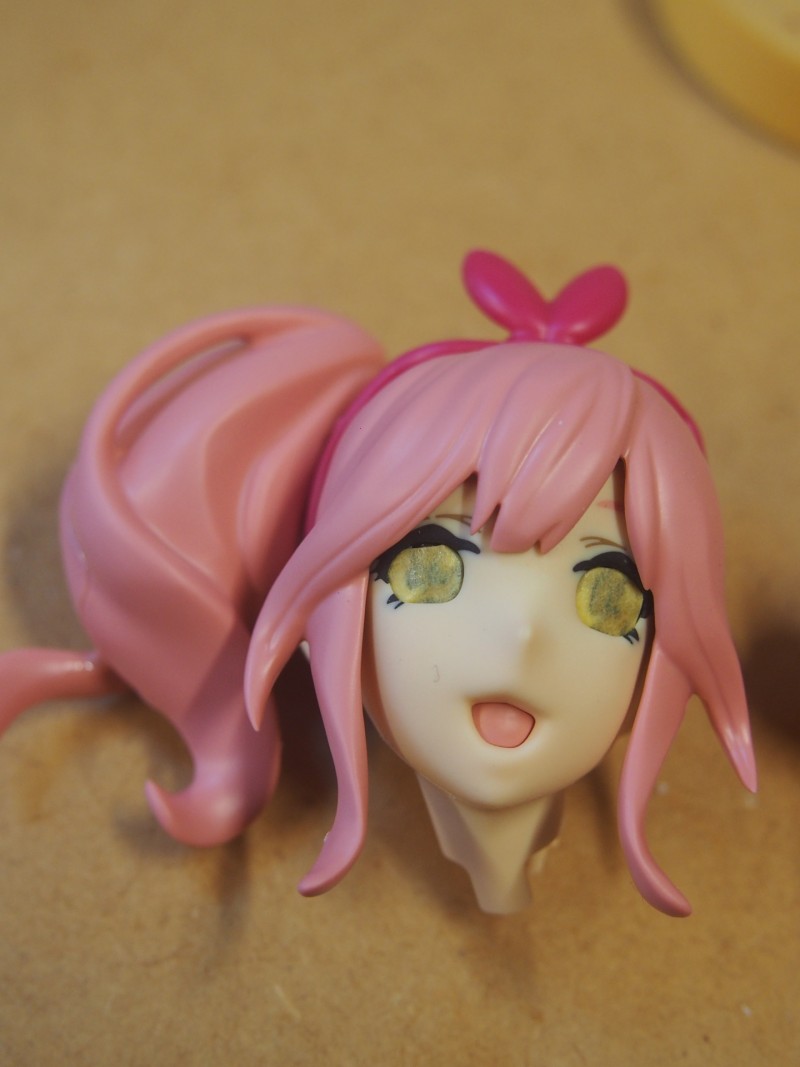

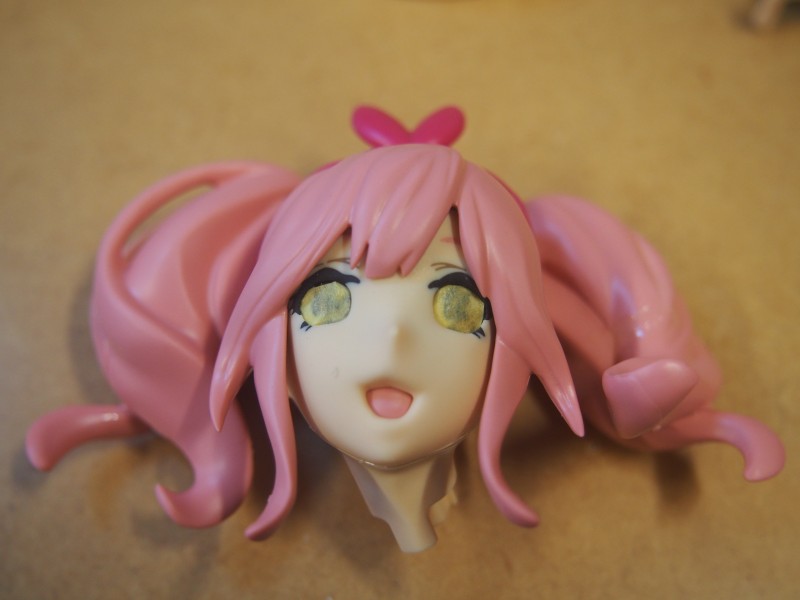

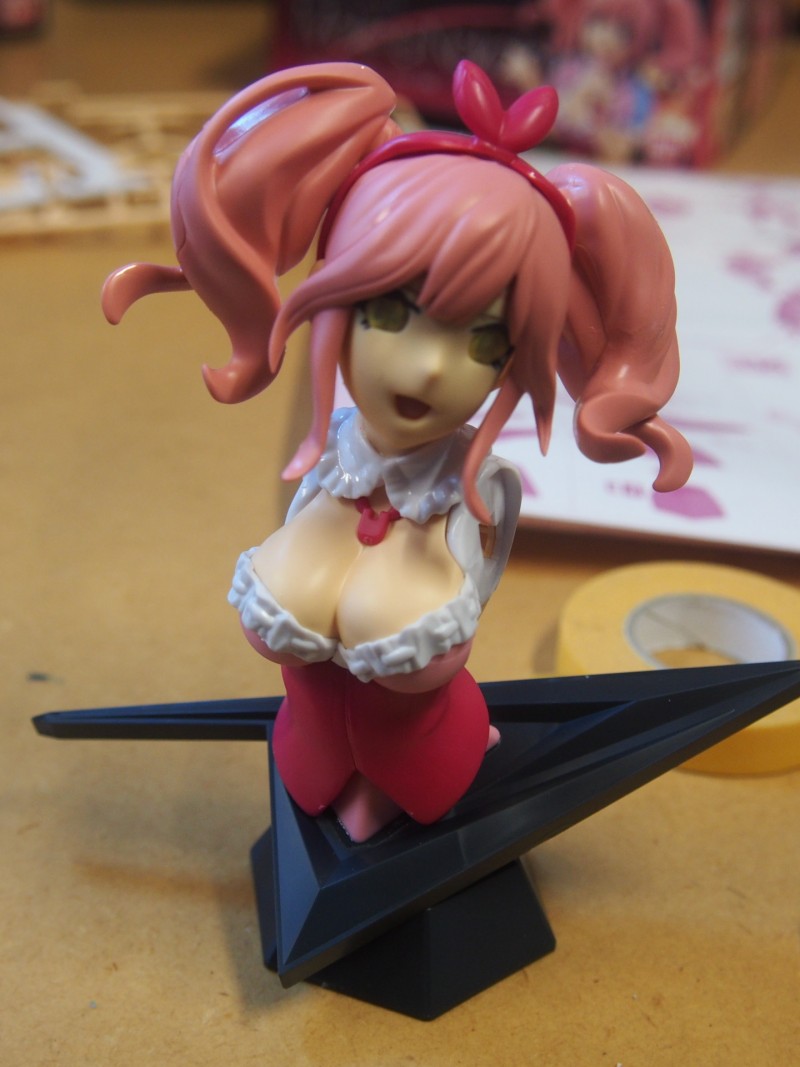

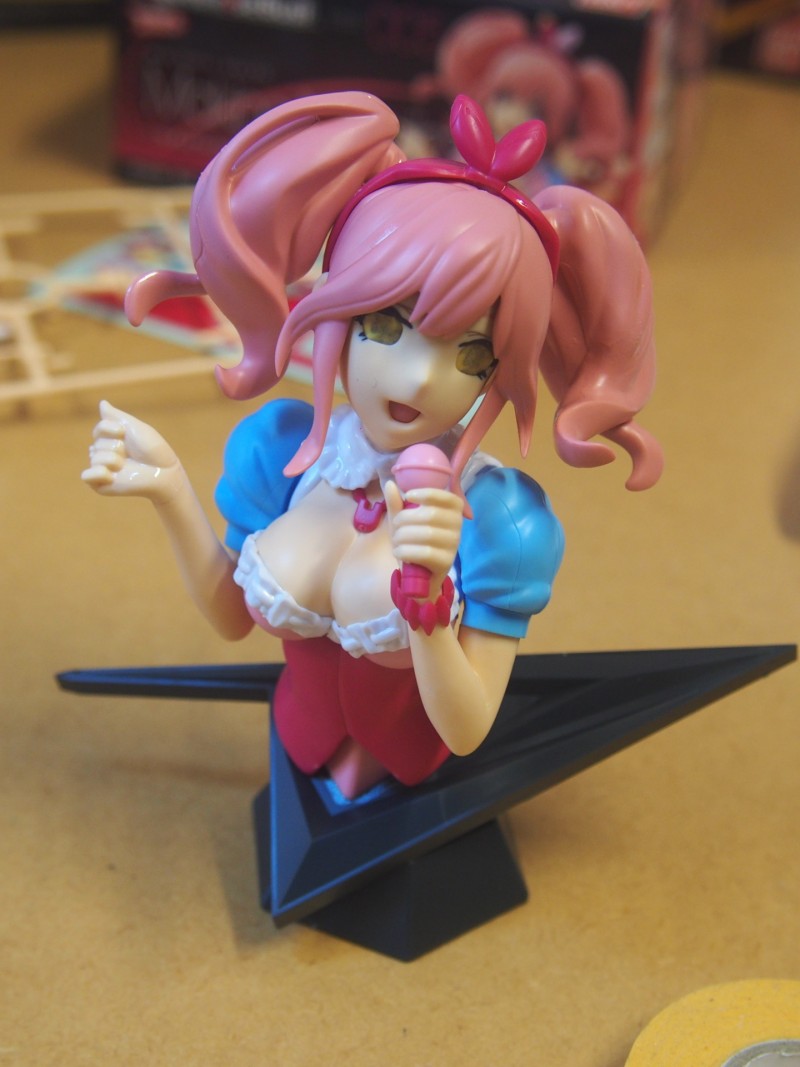

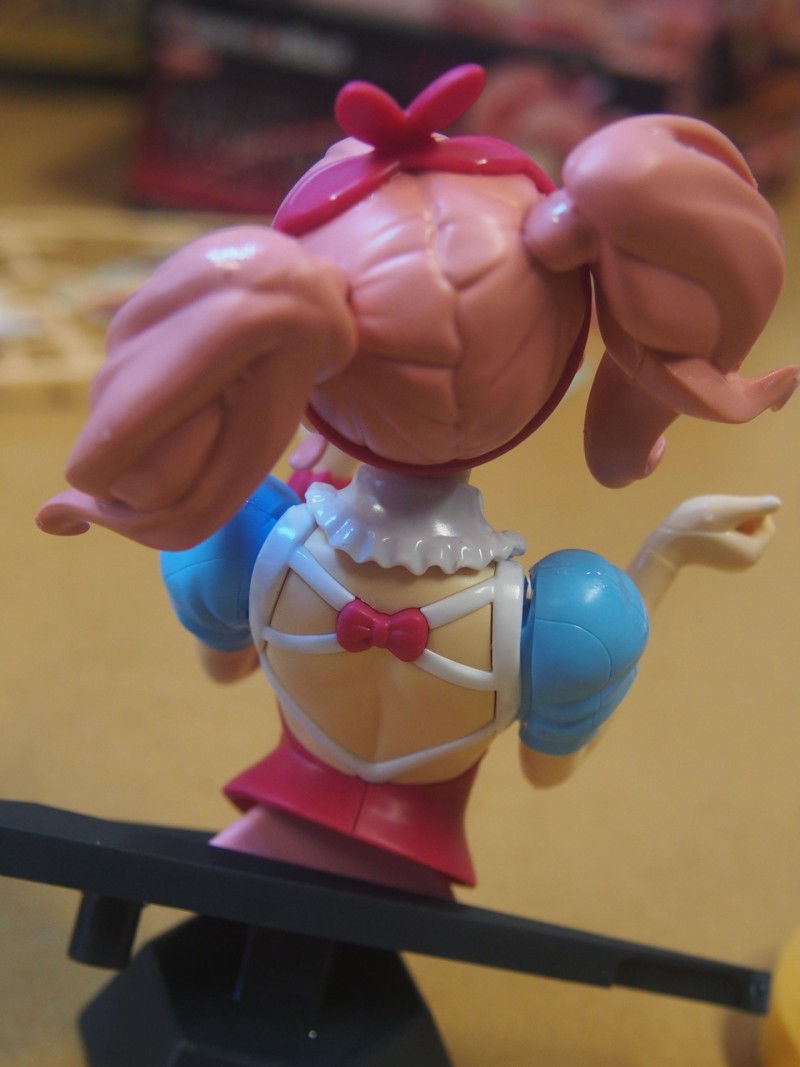

And there we are… Built as is, it is not a bad model. Were one to leave it as it is, it would still be a nice little display piece. However, we can do better than this, to close up the seams, paint in the detail and mat the whole thing down.
Born to be a Star
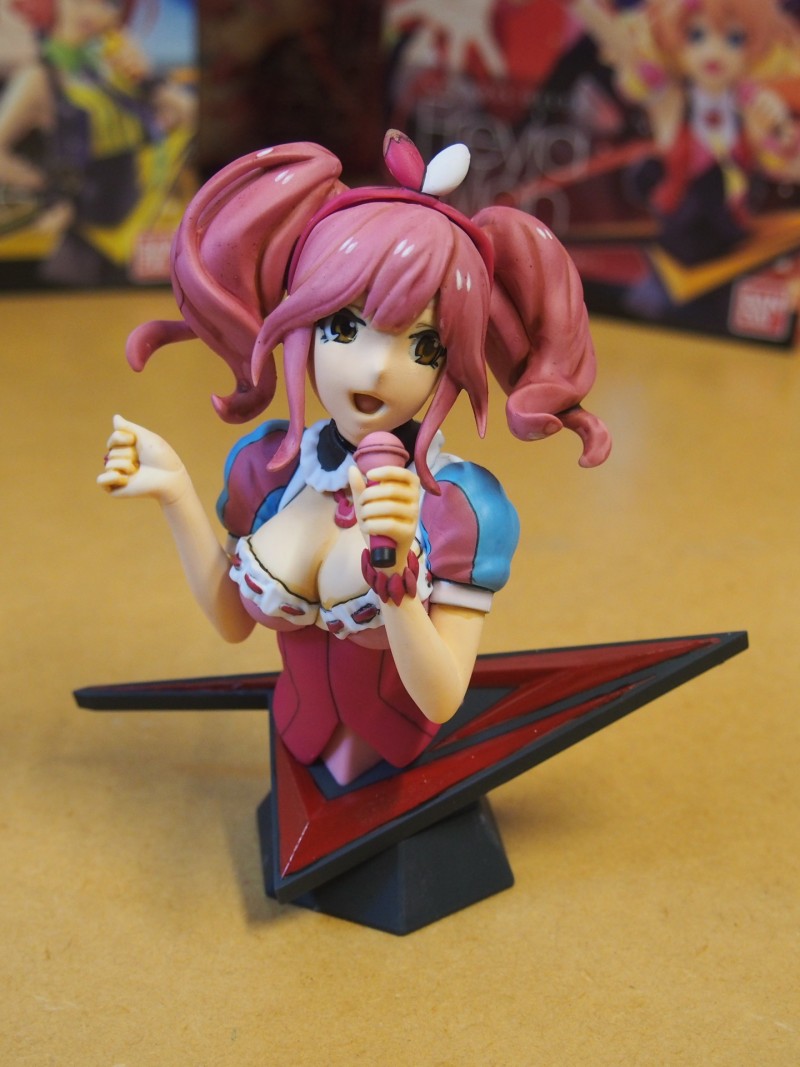

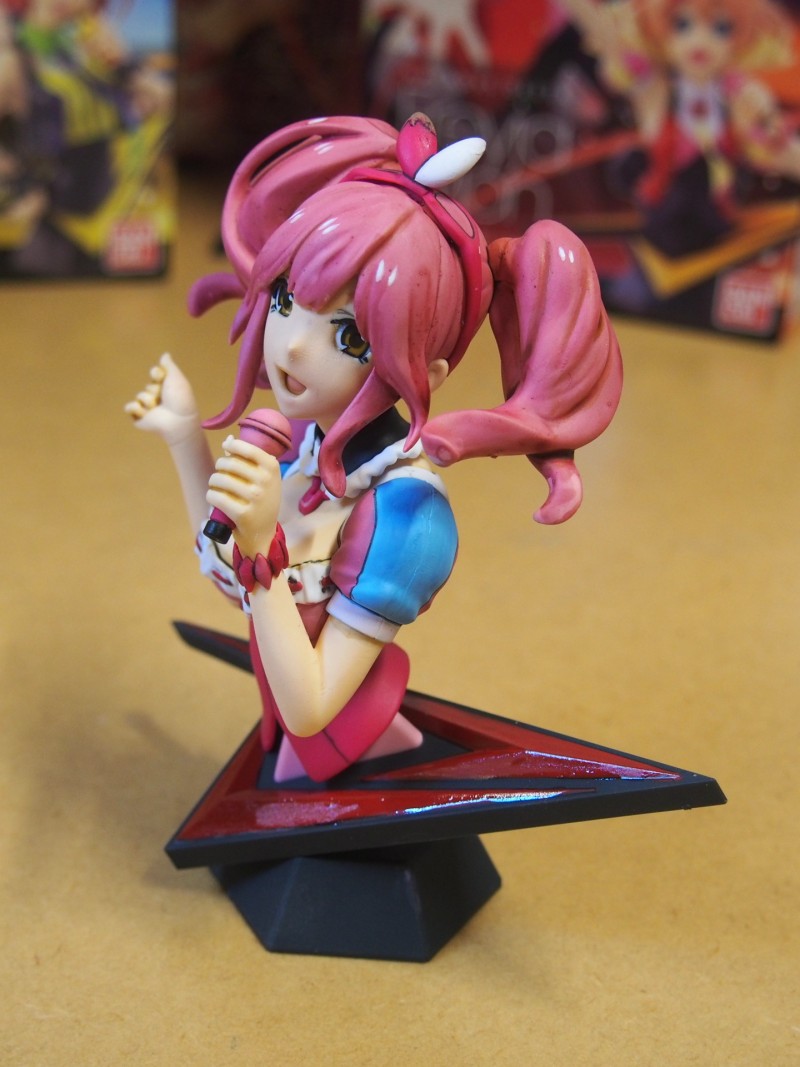

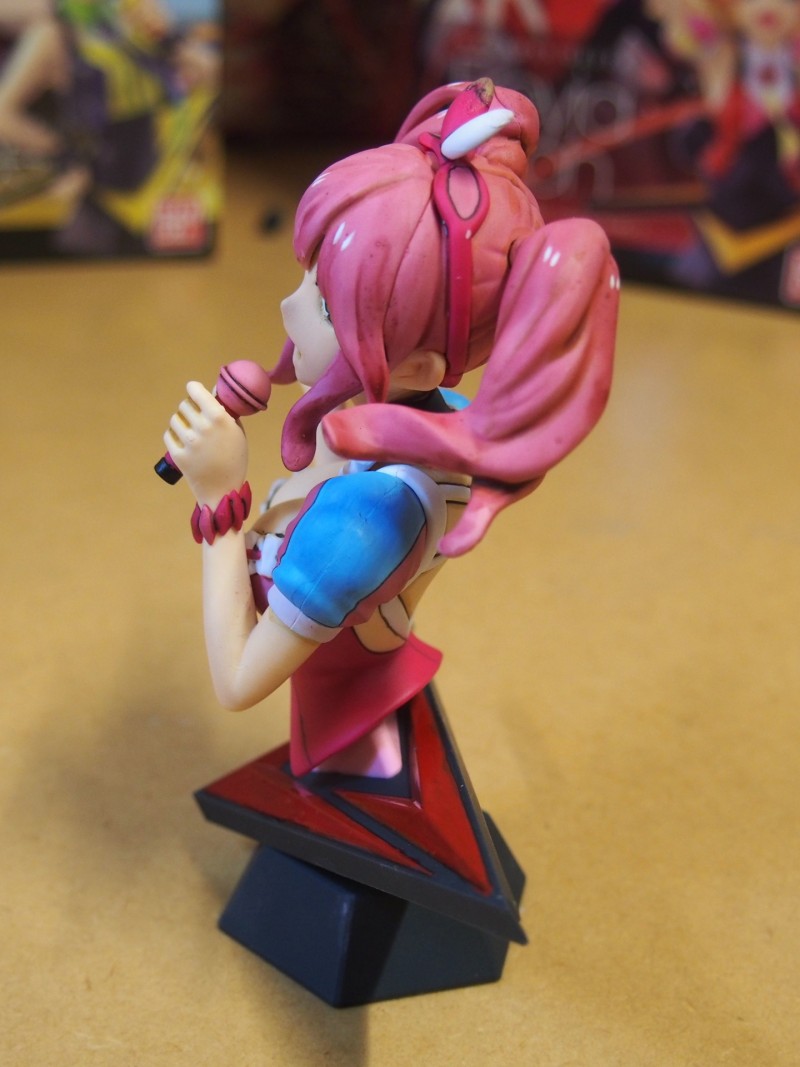

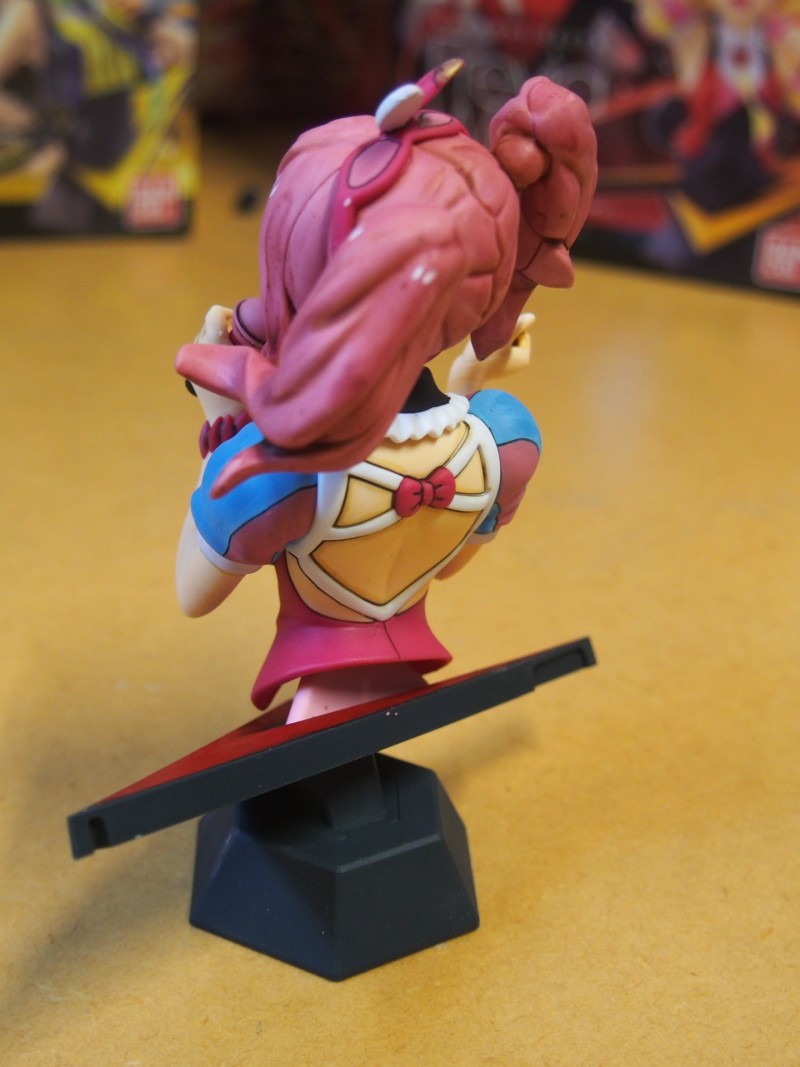

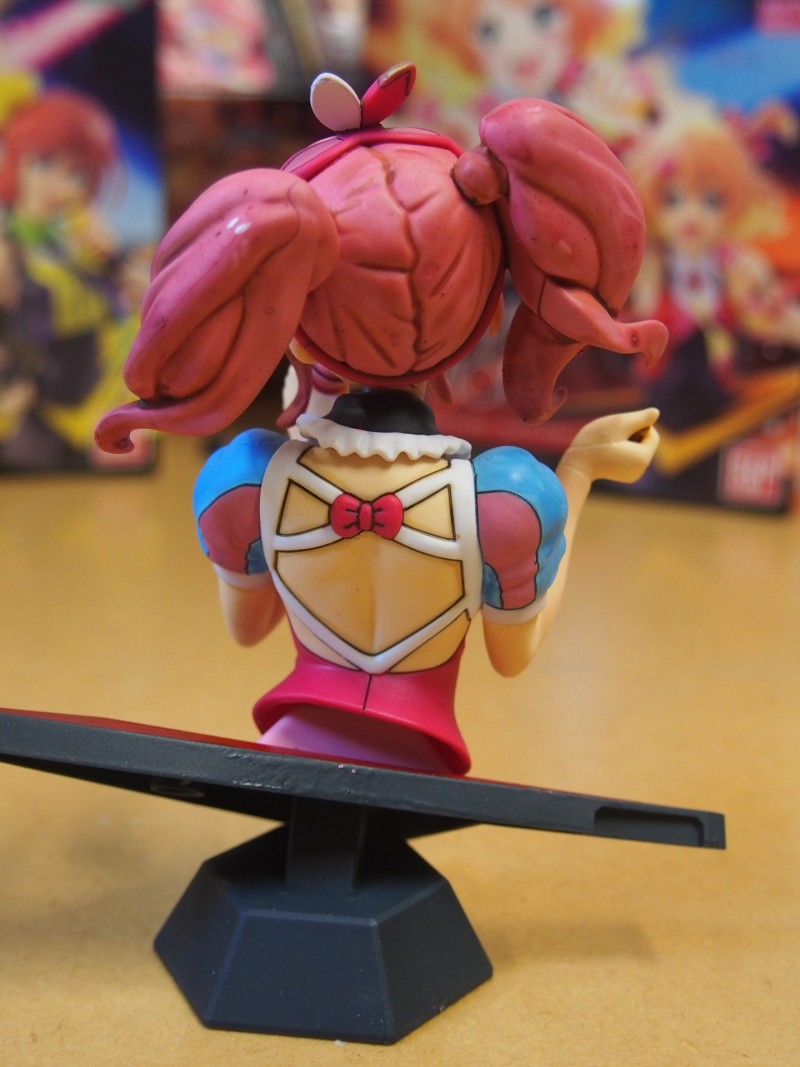

See the slot on the right? This is where one can attach the small Delta Fighter kits associated with each of the singers I mentioned in part one fit (sold separately)
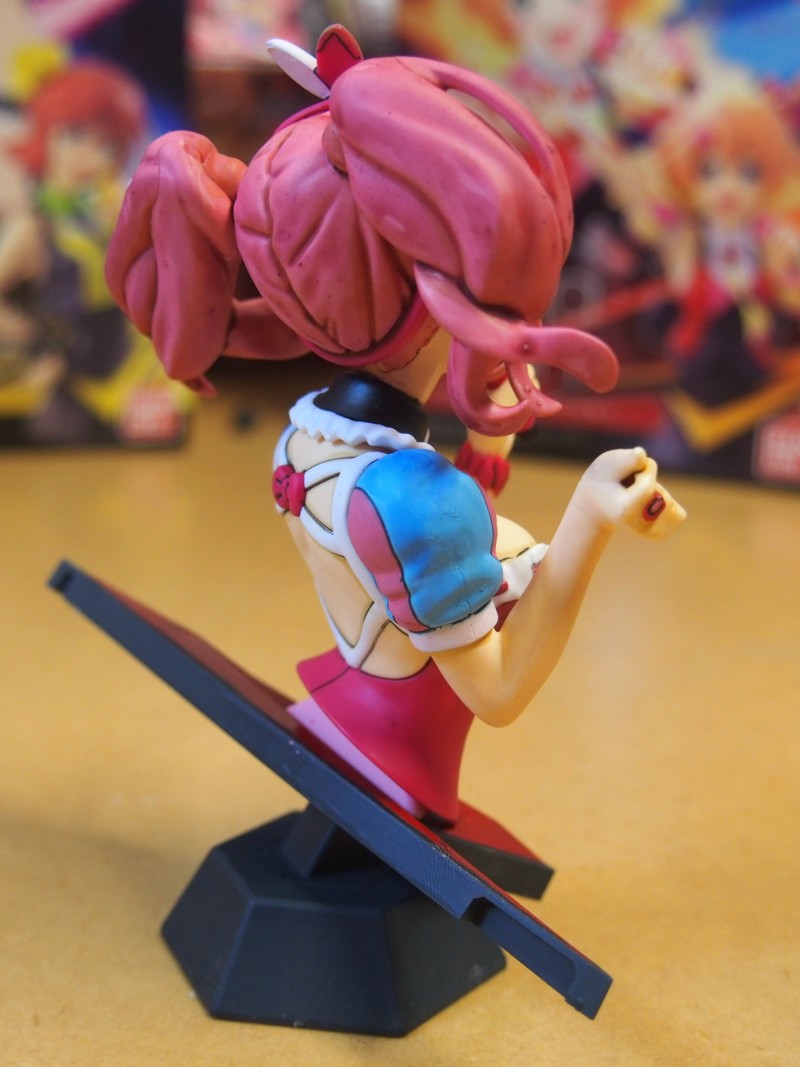

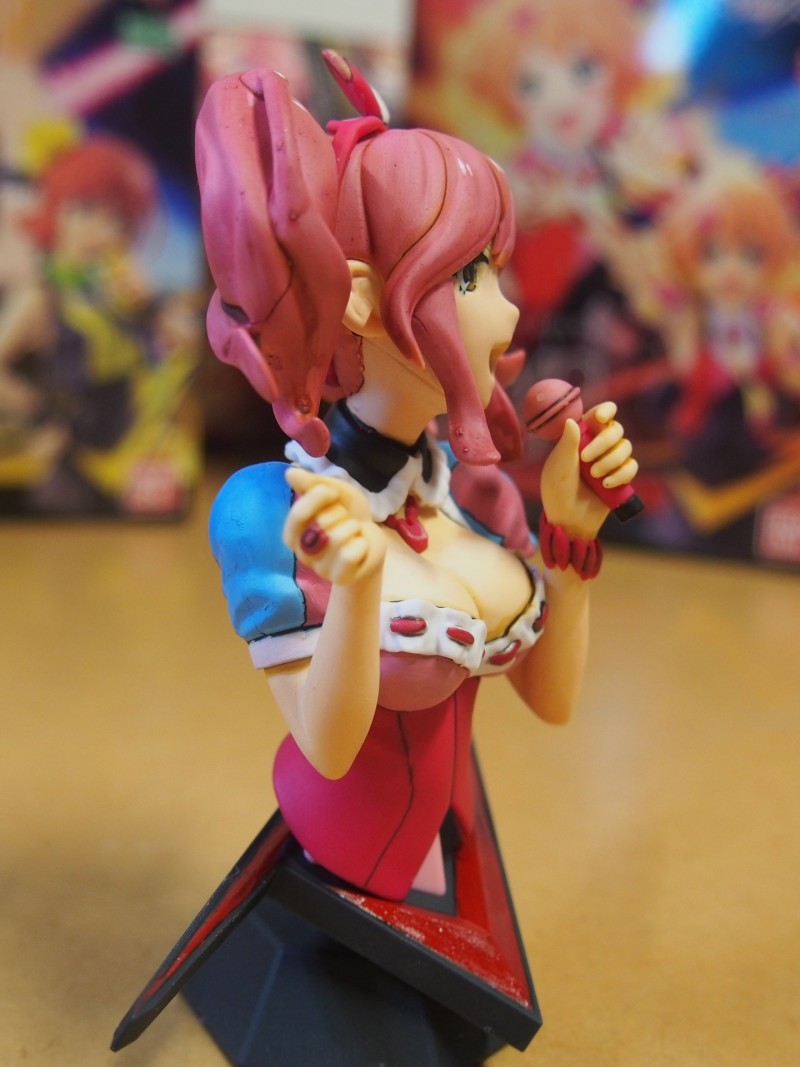

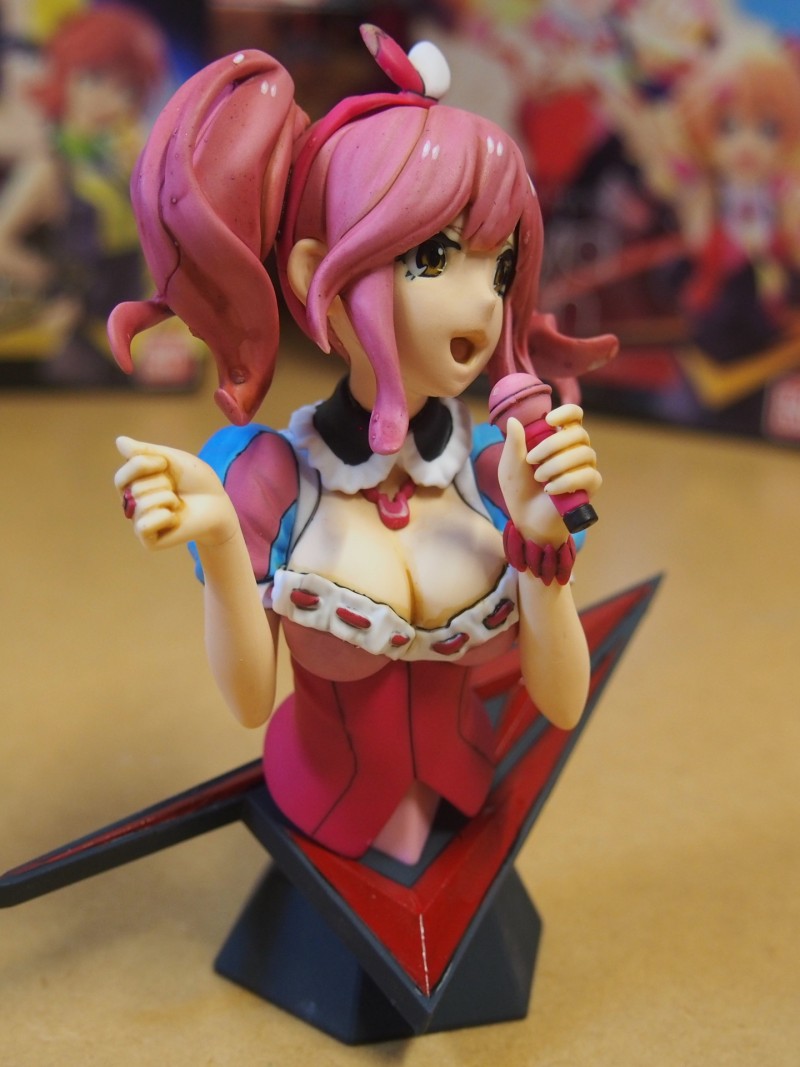

The hair still needs some work. The matcoat has reacted to the wash I put on… 🙁



Sold!
I’m sold on these little kits. Inexpensive, colourful and just right for a wet Sunday afternoon.
Once I’m done with these I’ll begin with the Dragonball series figures.
Dr. Robodaz.